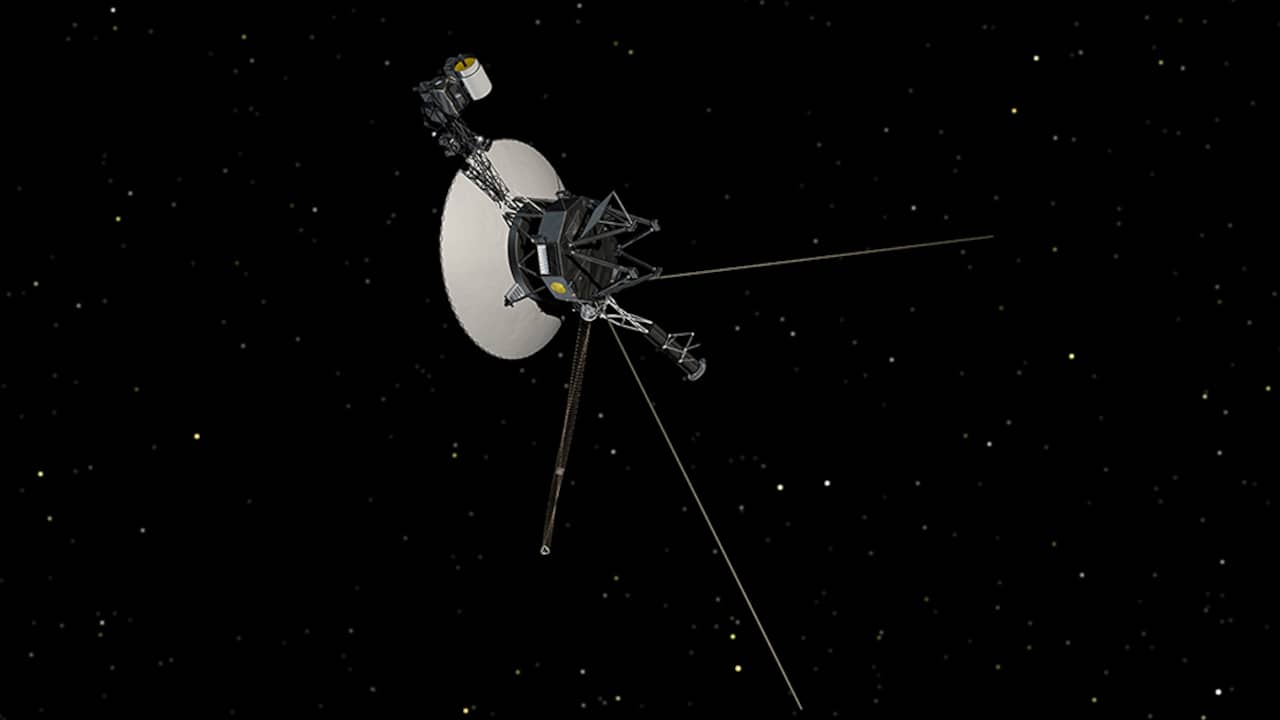Sandhi Yudha
Well-Known Member
There are five artificial objects/space probes to achieve the escape velocity needed to leave the Solar System. In sequence of launchdate: Pioneer 10, Pioneer 11, Voyager 1, Voyager 2 and New Horizons.
The outer boundary of the heliosphere, the heliopause, is the point at which the solar wind finally terminates and is the beginning of interstellar space. Voyager 1 and Voyager 2 passed the termination shock and entered the heliosheath at 94 and 84 AU from the Sun, respectively. Voyager 1 was reported to have crossed the heliopause in August 2012, and Voyager 2 in December 2018.
Voyager 1's extended mission is expected to continue until about 2025, when its radioisotope thermoelectric generators (RTGs) will no longer supply enough electric power to operate its scientific instruments.
Provided Voyager 1 does not collide with anything and is not retrieved, the New Horizons space probe will never pass it, despite being launched from Earth at a higher speed than either Voyager spacecraft. The Voyager spacecraft benefited from multiple planetary flybys to increase its heliocentric velocities, whereas New Horizons received only a single such boost, from its Jupiter flyby. As of 2018, New Horizons is traveling at about 14 km/s (8.7 mi/s), 3 km/s (1.9 mi/s) slower than Voyager 1.
Last year Voyager 1 started to register a monotone hum, which was scientifically explainable.

 www.nu.nl
www.nu.nl
But recently Voyager 1 started to send strange signals to Earth. For an as yet unknown reason, data received from the system doesn't seem to match up with what’s actually happening onboard.

 interestingengineering.com
interestingengineering.com

 www.jpl.nasa.gov
www.jpl.nasa.gov
There are maybe some Defencetalk-members who are fan of Startrek and fantasizing about V'ger, but no, that was actually Voyager 6.
The outer boundary of the heliosphere, the heliopause, is the point at which the solar wind finally terminates and is the beginning of interstellar space. Voyager 1 and Voyager 2 passed the termination shock and entered the heliosheath at 94 and 84 AU from the Sun, respectively. Voyager 1 was reported to have crossed the heliopause in August 2012, and Voyager 2 in December 2018.
Voyager 1's extended mission is expected to continue until about 2025, when its radioisotope thermoelectric generators (RTGs) will no longer supply enough electric power to operate its scientific instruments.
Provided Voyager 1 does not collide with anything and is not retrieved, the New Horizons space probe will never pass it, despite being launched from Earth at a higher speed than either Voyager spacecraft. The Voyager spacecraft benefited from multiple planetary flybys to increase its heliocentric velocities, whereas New Horizons received only a single such boost, from its Jupiter flyby. As of 2018, New Horizons is traveling at about 14 km/s (8.7 mi/s), 3 km/s (1.9 mi/s) slower than Voyager 1.
Last year Voyager 1 started to register a monotone hum, which was scientifically explainable.

NASA-sonde Voyager 1 registreert ver in de ruimte 'aanhoudend gebrom'
De NASA-ruimtesonde Voyager 1 heeft ver buiten ons zonnestelsel een vaag monotoon gebrom opgepikt. Het geluid is waarschijnlijk afkomstig van trillingen van kleine hoeveelheden gas in de ruimte tussen verschillende sterrenstelsels, schrijven wetenschappers in een onderzoek dat Nature Astronomy...
But recently Voyager 1 started to send strange signals to Earth. For an as yet unknown reason, data received from the system doesn't seem to match up with what’s actually happening onboard.

Voyager 1 sends mysterious data from 14.5 billion miles away
The probe is functioning properly, though.

Engineers Investigating NASA’s Voyager 1 Telemetry Data
While the spacecraft continues to return science data and otherwise operate as normal, the mission team is searching for the source of a system data issue.
There are maybe some Defencetalk-members who are fan of Startrek and fantasizing about V'ger, but no, that was actually Voyager 6.
Last edited:


